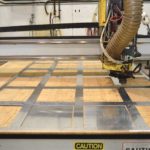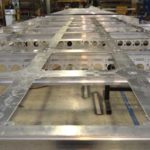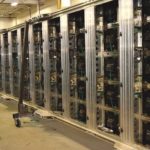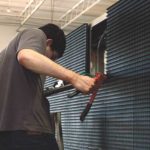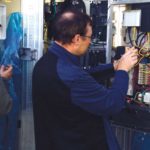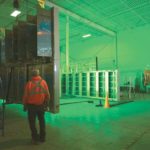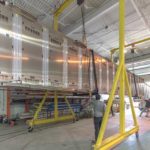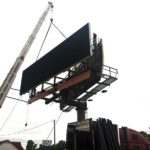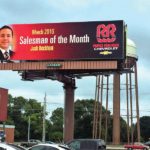Sign Shop Profile: Media Resources International
by all | 13 July 2016 3:57 pm
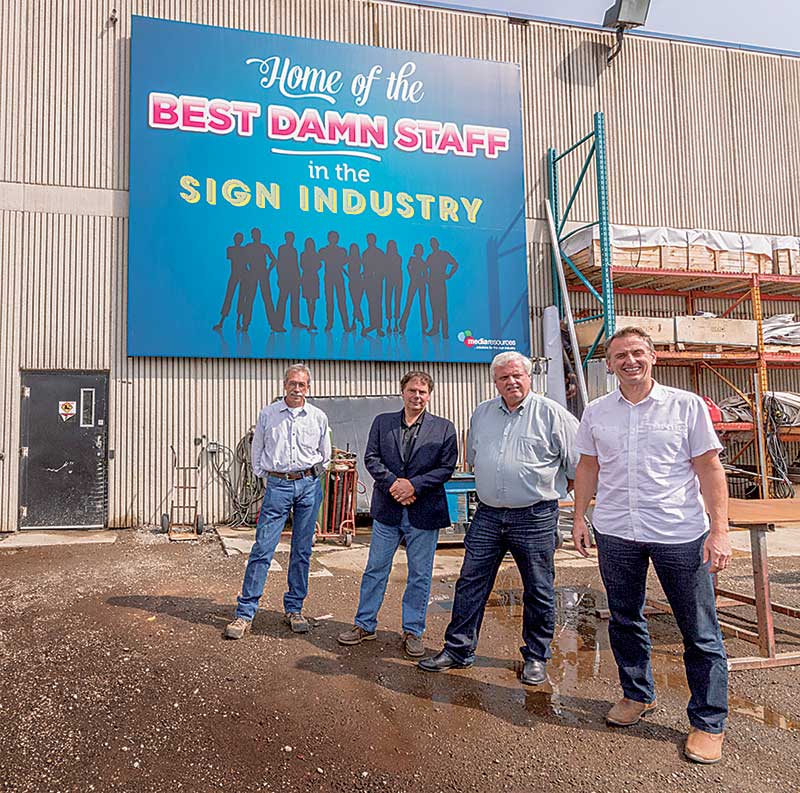
Photos courtesy Media Resources International
By Peter Saunders
Media Resources International (MRI), now celebrating its 50th anniversary, has evolved significantly throughout the years under the guidance of Keith Edwards, who is currently its co-owner and chief operating officer (COO). His older brother Grant registered the company as Grant Sign Services back in 1966 and got it up and running in 1967, specializing in sign installation and maintenance. Edwards joined a few years later, in 1972, and eventually became general manager (GM) in 1990 after his brother got out of the business.
Now, MRI not only installs and maintains signs, but also designs, prints and fabricates components and systems that are used in various aspects of the sign industry.
“We’ve come a long way,” says Edwards, “from a small installation company of three people in 1967 to a national company with more than 180 employees today.”
Investing in growth
When Grant exited the business, he sold it to Robert J. Deluce, now best-known as president and CEO of Porter Airlines.
“I worked for Bob as GM for 10 years and learned a lot,” says Edwards, “but he didn’t want to invest in the further growth of the company. By late 1999, I decided I wanted to buy it back. I worked with two silent partners to help finance the deal and then we really ramped up the business. In our first year, we went from having about 13 employees to 35, bought new equipment and more than doubled our sales. It was mainly a matter of getting additional work from our existing customers, since now we had the capacity to do so.”
In addition to growing in scale, the company grew in the diversity of its products and services. By way of example, one of Edwards’ business partners, Steve Gallow, had a background in large-format printing and led an effort in 2003 and 2004 to expand MRI into that field. (The other silent partner was Cal Corneya, whose background was in out-of-home (OOH) advertising with MediaCom. He has since retired, selling his shares to Jeff Rushton.)
“Being an installation company, we used to receive graphics printed by other companies,” Edwards explains, “but if they were printed wrong or delivered late, we got blamed. So by printing them ourselves, we could fix any problems better and faster than before.”
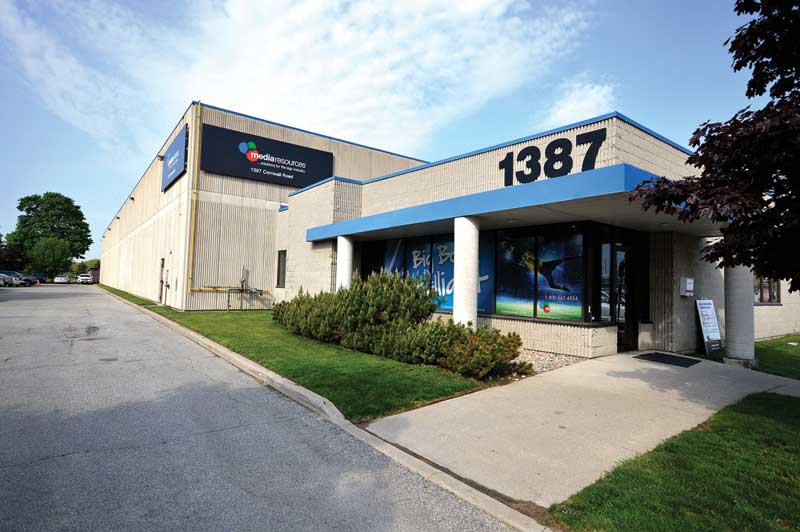 Under the oversight of Will Thomson, the fourth partner within the current ownership of MRI, a 15-person in-house team continues to print approximately 18,581 m2 (200,000 sf) of graphics per month. A large percentage of their work is for outdoor billboards, but they also print at higher resolutions—up to 1,440 dots per inch (DPI)—on acrylic, polycarbonates and glass, using both solvent-based and ultraviolet-curing (UV-curing) inkjet printers.
Under the oversight of Will Thomson, the fourth partner within the current ownership of MRI, a 15-person in-house team continues to print approximately 18,581 m2 (200,000 sf) of graphics per month. A large percentage of their work is for outdoor billboards, but they also print at higher resolutions—up to 1,440 dots per inch (DPI)—on acrylic, polycarbonates and glass, using both solvent-based and ultraviolet-curing (UV-curing) inkjet printers.
In 2005, MRI bought a manufacturer whose tri-vision signs it had previously installed and serviced. Rebranded as Rite Sign International, it became a highly successful division of the company.
“We started making those signs here and got to 95 per cent market share in Canada,” says Edwards. “It was a great business for us.”
A similar move into large-scale light-emitting diode (LED) displays involved a sales agreement and partnership with U.S.-based Young Electric Sign Company (YESCO) in 2009 and the eventual acquisition of Hamilton Digital Designs (HDD), based in Burlington, Ont., in 2011.
“We started developing new LED systems after buying HDD, as then we had the financing and personnel to make it happen,” says Edwards. “We modified colour positioning to optimize the screens’ horizontal and vertical viewing angles, sourced more efficient and powerful LEDs and angled them downward to reduce the waste of light spillage upward. We may not be as big as Daktronics or Watchfire Signs, but we run head-to-head with them and about 60 per cent of our sales are in the U.S., where they’re based.”
Grant’s name stayed on the company during the first few years of its new co-ownership structure, but was soon no longer suitable for the growing mix of services and products.
“Our divisions all had different names,” Edwards explains, “so we held a contest within the company to come up with one brand for everything we did. That was how we rebranded as MRI.”

A 15-person team digitally prints 18,581 m2 (200,000 sf) of wide-format display graphics per month.
Added dimensions
MRI’s current mix of services includes large-format digital printing and the custom fabrication of large LED displays, such as scoreboards. The company’s clients include OOH firms, advertising agencies, real estate developers and arenas.
“Installation and maintenance are still a big part of what we do, comprising about 50 per cent of our overall business,” Edwards says, “then five per cent is printing and the other 45 per cent is digital LED billboards and displays, which are growing at a rapid rate.”
Over the past few years, MRI has also developed a reputation for the specialized fabrication and installation of large, three-dimensional (3-D) props for the OOH industry. In 2014, for example, Pattison Outdoor launched a Coca-Cola billboard in Vancouver and Toronto to coincide with the Winter Olympic Games in Sochi, Russia. Both billboards were updated with a tally of Team Canada’s medals.
To accomplish this effect, MRI first printed the main 7.3 x 14.6-m (24 x 48-ft) billboard panel on flex material and attached a 6 x 6-m (20 x 20-ft) red maple leaf made of exterior-grade plywood with self-adhesive to the front, securing it with throughbolts. Then, the company’s crew added 0.9-m (3-ft) plywood Olympic medals—wrapped in gold, silver or bronze vinyl and decorated with blue flex ribbons—to the billboards to reflect Team Canada’s ongoing performance. Every morning, the installers would go to the site if any medals were won the day before and add them to the maple leaf. In total, Canada won 25 medals at those games.
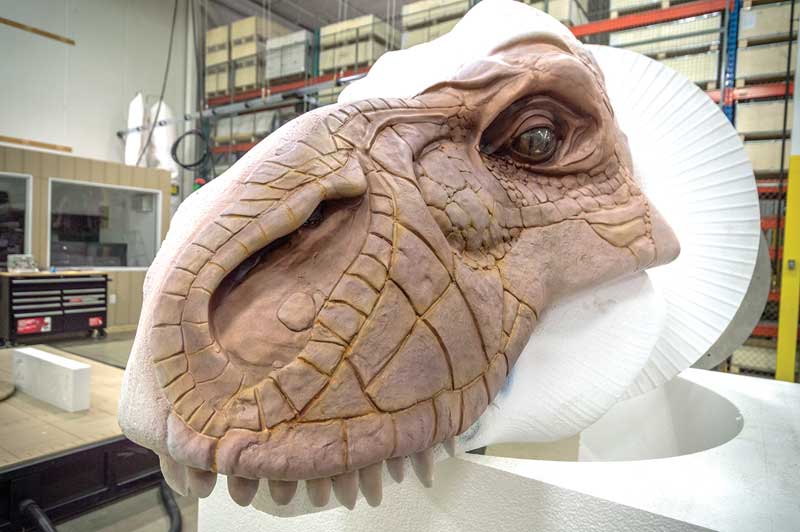
With growing demand for 3-D OOH props, MRI has expanded its CNC cutting and milling capabilities in recent years.
The project was a runner-up in the 2014 National Sign Competition’s OOH category, beaten only by a fellow MRI-fabricated ‘stunt’—a giant Mike’s Hard Lemonade can that was installed along Toronto’s Yonge Street in the summer of 2013.
More recently, the company developed a giant roulette wheel for Clear Channel Outdoor, advertising Fallsview Casino of Niagara Falls, Ont., to people passing by Toronto’s Yonge-Dundas Square.
“Computer-aided design (CAD) technology has made this kind of work quicker and more affordable than it used to be,” says Edwards. “We’ve invested in more computer numerical control (CNC) cutters for working with foam, as we’ve been inundated with these types of projects and we still don’t have enough people to handle the demand. It’s a niche where we’ve done a great job at marketing.”
And as mentioned, the LED display business (see pages 28 and 29) is also growing for MRI.
“We’re good at creating custom digital billboards, but in the last 18 months, we’ve also seen more and more indoor LED display projects come along,” says Edwards. “They’ve quickly grown to represent about eight per cent of our work. We can get down to a pixel pitch of 1.7 mm (67 mil), which looks clear from about 3 to 4 m (10 to 13 ft) away.”
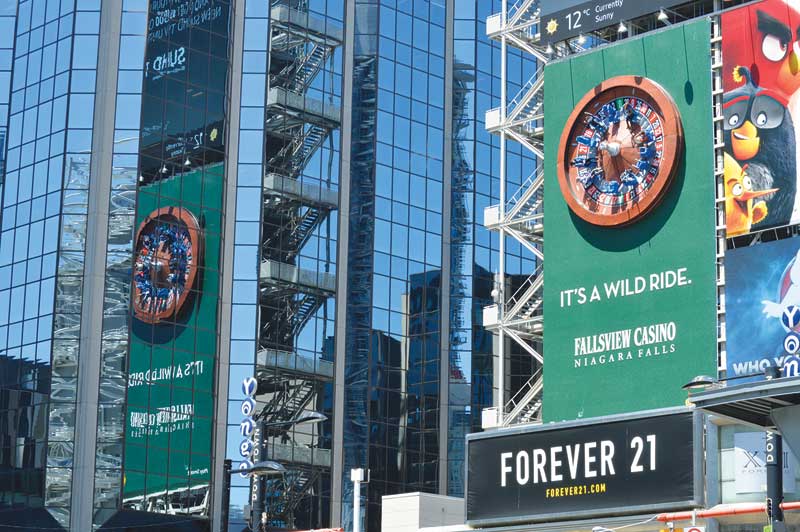
The company recently developed a giant roulette wheel for Clear Channel Outdoor, advertising Fallsview Casino to people passing by Toronto’s Yonge-Dundas Square.
A longer reach
In 2010, MRI’s headquarters (HQ) moved from a leased property in Mississauga, Ont., to a fully owned 5,574-m2 (60,000-sf) building in neighbouring Oakville. This centre of operations is also complemented by smaller facilities in Richmond, B.C., Edmonton and Calgary, along with sales offices throughout North America. And to back up its claim as Canada’s only national sign installation company, MRI operates more than 100 installation and service vehicles.
“Back in the 1970s when I joined the industry, large sign companies had their own trucks,” Edwards explains. “Nowadays, most of them have gotten out of the installation business. And OOH firms do not do their own maintenance. The costs of the vehicles have gone way up and you have to roll them over pretty quickly to keep your fleet viable. So we pride ourselves on taking on that work for the trade. We’re a partner to them, not a competitor.”
And in the LED display business, MRI’s reach extends not only throughout Canada and the U.S., but also through South America into markets like Peru and Argentina, where it has worked with local OOH firms.
Nevertheless, MRI remains committed to its roots in the Greater Toronto Area (GTA). In 2015, the company won an Oakville Award for Business Excellence. It was named the town’s Large Business of the Year in recognition of its track record of growth, innovation and community activities.
“Having been with the company for 45 years and an owner with some great partners for 16 years,” Edwards says, “I’m truly proud of MRI and can say it is one of a kind in our industry. We’ve got a dedicated team of the best staff in the industry. We take care of each other and of our customers. Everything else just falls into place.”
Engineering a Digital Billboard
Source URL: https://www.signmedia.ca/sign-shop-profile-media-resources-international/















